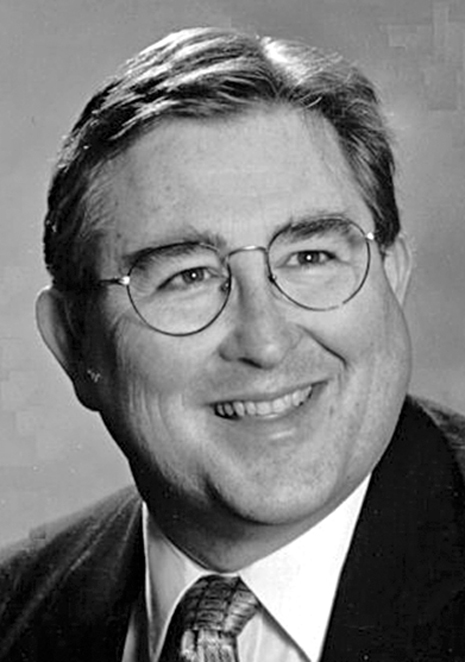By Danny Crownover
Many people have asked The Vagabond about the combined Creek Path and High Town Path that went up Penitentiary Hollow (up Fisher Creek from Cox’s Gap). This is the route Andrew Jackson used before he created a new route called the Jackson Military Trace through Highway 179 and today’s Ivalee community. Years ago, the late historian Jerry Jones sent information on this to The Vagabond. Jerry wrote:
“Lucius Verus Bierce, upon completing his education, began a tour from 1822 to 1823 of the ‘Travels in the Southland.’ Recorded in his journal for April 5, 1823, only nine years after the end of the Creek War, Bierce traveled through Etowah and Marshall counties. Bierce wrote:”
‘My course from Carolina hath hitherto been a little North of West, taking the road Jackson cut out when going to the Creek War. Eight miles from Wills Creek, I came to the gap of Mt. Lookout [actually Sand Mountain], cut by a queer creek, which I so called from one, of that name near Chilicothe in Ohio, which in serpentine crooks resemble it.
‘I followed in the bed of the creek from the gap to the top of the mountain, which is about six miles, crossing the creek the creek in that distance 41 times. The scenery on each side of this road is the most sublime that can be well imagined. The huge mountain cut through its base by the stream; the whole width of the opening not exceeding 40 or 50 feet, and the rocks towering above the head seem to threaten destruction to any who attempt the pass.
‘Arriving on the top, the mountain is nearly level. On the left of the road is a dismal swamp from which proceeds the creek that cuts through the mountain. This road is on the line between the United States and Cherokees as run by General Coffee, the trees being marked on one side ‘U.S.’ and on the other ‘Cherokee.’ Eight miles from the top of the mountain I came upon Cox, a kind of pioneer who keeps a tavern on the line that is just within the line of Blount County.
‘One mile from the Cox place, I again crossed the line into the “Nation,” and nine miles farther I came to the foot of the Appalachian Chain on the west side, and I put up for the night at Brown’s Tavern. This Brown is father to Catherine Brown, the ‘Indian Convert,’ whose fame resounded so far at this time. Curiosity to see her, perhaps, was as great an inducement for me to put up as any other.
‘I saw her. She was probably one-fourth Indian, beautiful form, thick set for one of her tribe, dressed in the American style, and but for the small, dark eye, prominent cheek bones and glossy hair, would have passed well for an American lady. Her accomplishments were good, as she was visited by the most refined and elegant of the whites. Report said she had received several proposals for marriage from respectable white men, all of which she declined.”
“Bierce followed the old High Town Path out of Georgia into Alabama and came to what is now Gadsden, at the time called Double Springs, where John Riley, a half-breed Cherokee, had a stand at the corner of what is now North Third Street and Tuscaloosa Avenue. John Riley’s mother was a sister to Nancy Fields Ratliff, the Cherokee wife of Richard Ratliff.
“Nancy was also a sister of Sarah, the wife of old John Brown of Brown Valley near the Tennessee River, but who was living in 1800, when her daughter Catherine Brown was born in Wills Valley between Raccoon and Lookout Mountains. At that time, they lived within a mile of where Richard and Nancy Fields Ratliff were living at what is now the intersection of Highway 77 and U. S. Highway 431, just outside of Attalla.
Their home fell into the area that became the U.S. and St. Clair County. From Riley’s stand, Bierce followed the High Town Path (that also was known as the Tuscaloosa Road) over Black Creek, on to where Attalla is now located, and followed the High Town Path to Big Wills Creek, where it intersected with the Creek Path that led from the Ten Islands.
“From that point, Bierce followed the combined paths to the old Sand Valley Road and proceeded up the valley to what is now Cox Gap, and the location of where Jackson’s army camped at the big blue spring on Oct. 25, 1813. Here the road divided, and the right path proceeded up Sand Valley past Kyuka Cemetery and on to Wills Town. The left path was the combined Creek Path and High Town Path at the foot of Raccoon Mountain, now known as Sand Mountain. The paths crossed Fisher’s Creek, which in early times was known as Fishes Creek, named for John Fish, who had a cabin about halfway up the path leading to the top of the mountain.
“At the foot of mountain is Cox Chapel Methodist Church, and just at the rear of the old building and the cemetery is where Bierce came in 1823. This area is today known as Penitentiary Hollow and from whence flows Fishes or Fisher Creek.”
The Vagabond has followed this path many times and crossed the creek the 41 times that Mr. Bierce crossed it. There is no other spot in Etowah County that matches what Mr. Bierce saw and what I have seen. It is one of the most sublime spots I have ever been to, and it is like stepping back 200 years or more.
It was Like DeSoto, who came down the mountain in his travel in the south, and when Davy Crockett scouted the route for Andrew Jackson’s army, and where Jackson himself came to the foot of the mountain and to the blue spring and on to Ratiliff s and to Wills Creek and Camp Wills.
Mr. Bierce described the swamp he found at the top of the mountain, which it is still there, and the creek down the hollow that is fed from the swamp. This is located near Happy Hill Baptist Church on Cox Gap Road. Mr. Bierce continued following the old Creek Path and what is now Cox Gap Road and saw the trees marked “U.S.” and “C” for Cherokee, which was required by the 1816 Chickasaw and Cherokee Treaties.
The Mr. Cox that Bierce encountered was Edward (Ned) Cox, born Sept. 25, 1785, in Hawkins County, Tenn. He was the son of Captain John Cox, Jr., and his wife, Tabitha Amis. The younger Cox’s wife was Roda Jean Lee, the daughter of Micajah and Sarah Griffin Bailey Smith Lee, and grandson of Captain Thomas Lee and Mary Griffin Lee.
The Lee and Bailey men were soldiers with Andrew Jackson and were among the first settlers of Shelby County. Edward and Roda Lee Cox had one son, Thomas Gale Amis Cox of Cox Gap, who married first Mary (Polly) Boyd, the daughter of Judge Samuel and Martha Coleman Boyd. Martha’s father Philip Coleman laid out the town of Ashville, and Judge Boyd was an early probate judge before moving to Benton County in the Alexandria Valley.
After the Creek War, Edward Cox improved the old Jackson Road, which became known as Cox Turn Pike. Part of the road is now called Turn Pike Road in the southern part of Albertville.
Bierce followed the old Creek Path, or Jackson Road, to the foot of Sand Mountain, where he found the Brown family still living. He gives us a good description of the famous Catherine Brown, early convert and teacher at the Creek Path Mission, and sister of David Brown, who assisted Sequoyah in translating the New Testament, of the Bible into the Cherokee language. Catherine’s half-brother was Col. Richard Brown whose assistance to Jackson throughout the Creek War is well documented. Brown himself was wounded at the Battle of Horseshoe Bend.
Many thanks are extended to Mr. Bierce for pointing out these places in his book, which helped us to be able to identify the route of these old paths and trails which passed through our area.




